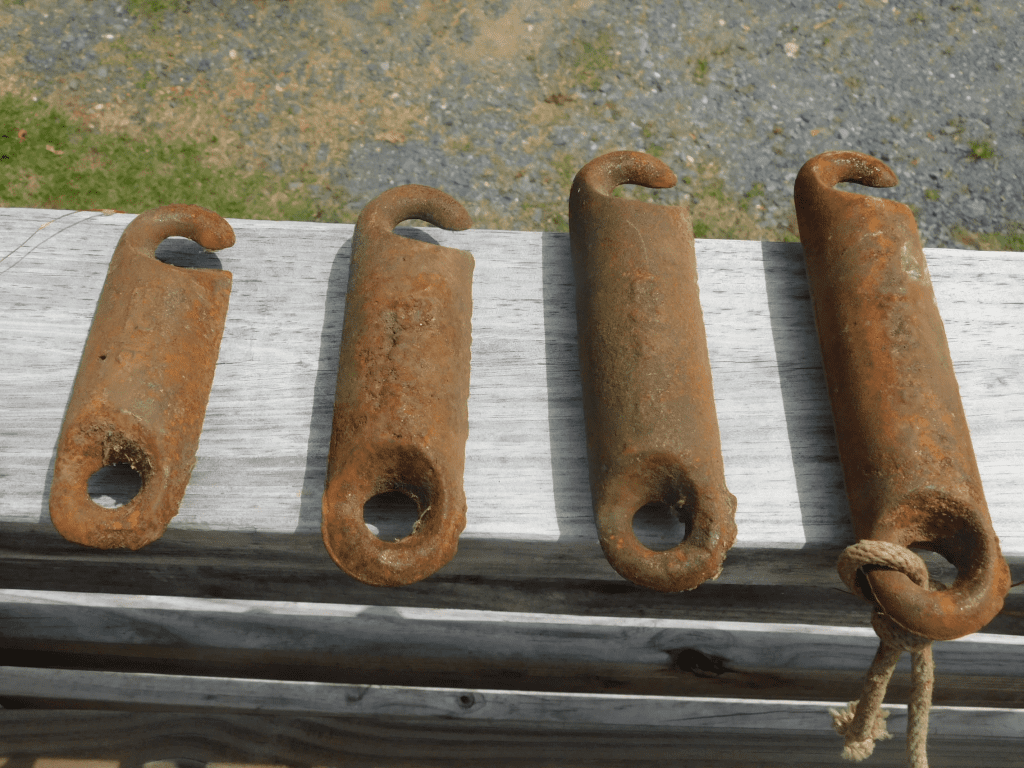Vintage window weights, those silent, sturdy elements hidden within traditional sash windows, add an undeniable charm to historical architecture. Beyond their functional role, they embody centuries of craftsmanship, architectural elegance, and design ingenuity. These cast iron weights, often adorned with intricate details, offer a glimpse into a bygone era where form met function with remarkable finesse. In this article, we’ll explore the rich history of vintage window weights, their significance in preserving architectural authenticity, and the role they play in celebrating timeless beauty.
The Rich Heritage of Vintage Window Weights

Dating back to the 17th century, window weights evolved as part of sash window mechanisms, allowing windows to open and close with ease. Early designs were simple, using rudimentary rope and pulley systems to balance the window sashes. However, as craftsmanship advanced, so did these window weights. By the 19th and early 20th centuries, the industry had perfected cast iron weights, creating not just functional pieces but also works of art.
In this period, window weights became more than just utilitarian objects. They were crafted with care, often featuring detailed designs, inscriptions, and unique shapes. These additions were not just for aesthetics—they also signified the era’s pride in craftsmanship. Vintage window weights are thus a tangible connection to the architectural heritage of the past, bearing witness to the skill and dedication of artisans from generations ago.
Window Weights as Symbols of Architectural Heritage
The beauty of vintage window weights lies in their ability to tell a story about the architectural style and values of a bygone era. Each weight is a small but powerful reminder of the meticulous attention to detail that went into building structures meant to last centuries. These weights didn’t just support windows; they reflected the architectural identity of the buildings they were a part of.
Intricate Designs and Manufacturer Insignias
Unlike modern, mass-produced materials, many vintage window weights were individually crafted, bearing manufacturer insignias or intricate designs that identified their origins. These elements lend each weight a distinct personality, turning what might otherwise be a hidden mechanism into a cherished artifact. For those who value historical architecture, these weights are pieces of history worth preserving, as they offer insight into the materials and methods used by craftsmen in the 18th and 19th centuries.
Preserving Authenticity in Restoration Projects
In the world of architectural restoration, vintage window weights play a crucial role. As interest in preserving historic buildings grows, restoration projects seek to maintain authenticity by retaining or replicating original architectural elements. Vintage window weights are often high on the list of priorities, as they represent both function and tradition.
Restoring these weights involves careful craftsmanship to ensure they match the originals in design and weight, maintaining the balance needed for traditional sash windows to function properly. This process isn’t just about aesthetics—it’s about honoring the legacy of those who built and designed these structures. By preserving original window weights or creating faithful replicas, restorers ensure that historical buildings retain their original character.
The Art of Replication: Bringing History Back to Life
When original window weights can’t be preserved, craftsmen often create replicas using traditional techniques and materials. These replicas are painstakingly made to match the originals, allowing modern buildings to maintain the charm of their historical counterparts. This approach respects both the heritage of the building and the artistry of the original creators, keeping the spirit of the past alive for future generations.
Vintage Window Weights: Silent Contributors to Preservation

Though hidden behind the scenes, vintage window weights play a silent yet significant role in architectural preservation. They support the window structures, enabling them to operate smoothly and maintain their classic charm. Without them, the aesthetics and functionality of traditional sash windows would be lost, robbing buildings of a key aspect of their historical appeal.
Why These Small Details Matter
Vintage window weights may be small, but they’re essential to the overall look and feel of historical architecture. They serve as a reminder that even the most functional elements of a building can be crafted with care and attention to detail. By retaining these pieces in restoration projects, we’re not just preserving physical structures; we’re preserving the values and design principles of past eras. In doing so, we celebrate the beauty found in craftsmanship that modern designs often overlook.
The Timeless Beauty of Cast Iron and Traditional Craftsmanship
There’s something inherently captivating about cast iron window weights. These objects, made to support the smooth operation of sash windows, embody a timeless beauty rooted in their simplicity and durability. Cast iron has long been valued for its strength and longevity, qualities that align perfectly with the architectural ideals of the 19th century.
Why Cast Iron Remains a Preferred Material

Cast iron isn’t just durable; it’s also versatile. Its ability to hold detailed designs makes it a favored choice for architectural elements, including window weights. Cast iron’s weight provides the necessary counterbalance for sash windows, ensuring they operate efficiently without compromising the aesthetic appeal of the building. Today, many restoration experts continue to use cast iron to replicate vintage window weights, keeping this traditional material alive in contemporary architecture.
Celebrating the Charm of Vintage Window Weights
The beauty of vintage window weights is that they add a touch of elegance to architectural structures, often hidden from view yet fundamental to their charm. These weights are more than just utilitarian objects—they’re pieces of history that speak to the ingenuity of the past. By celebrating them, we acknowledge the legacy of traditional craftsmanship and the enduring appeal of designs that have stood the test of time.
A Window into the Past

Vintage window weights are like small windows into the past. They allow us to appreciate the design choices of earlier eras and understand the attention to detail that characterized historical architecture. Even as modern technology advances, the value of these classic elements remains, offering a balance of form and function that continues to inspire.
Conclusion: Embracing the Timeless Legacy of Vintage Window Weights
Vintage window weights may seem like small, inconspicuous elements of architectural design, but they carry with them a legacy of craftsmanship, functionality, and beauty. From their early beginnings in the 17th century to their role in modern restoration projects, these weights have proven themselves to be much more than simple tools. They are reminders of a time when even the smallest details were crafted with care and purpose, and they continue to enhance the historical appeal of countless structures today.
As we continue to preserve historical buildings, let’s not overlook the charm of these hidden elements. In appreciating vintage window weights, we honor the past, celebrate craftsmanship, and ensure that the beauty of traditional design lives on in our architectural heritage. These small weights may be hidden, but their impact on preserving history and adding charm to buildings is far from invisible.





